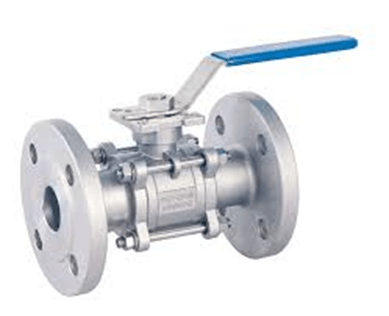
Do’s and Don’t of Valves — Valve Selection
Valves are a part of many daily functions, from ensuring your car doesn’t overheat to successfully operating a chemical plant. They have been designed to perform a variety of functions such as stopping and starting, throttling, or acting as a non-return for flow.
Isolation valves are used for systems that do not need the flow throttled and allow the flow and closes to stop flow.
Throttle or control valves control the speed and capacity of flow through the system.
Non-return or check-valves control the direction of flow. Flow in the desired direction opens the valve, while flow in the oppose direction forces the valve closed. These valves are important for preventing backflow to systems in applications such as wastewater management.
Below is a summary of the basic and most common types of valves, more information can be found by contacting our highly competent team of engineers.
Gate Valves

Figure 1: Typical gate valve.
Description
- Linear motion valves used for isolation.
- The valve is completely opened when the disk is removed from the flow stream.
- Classification of gate valves is made by the type of disk used: solid wedge, flexible wedge, split wedge, or parallel disk.
Advantages
- No resistance to flow when open.
- Small pressure drop.
- Bidirectional.
- Available in large sizes.
Disadvantages
- Flow changes nonlinearly with stem travel.
- Vibration/cavitation when partially open.
- Low-pressure limitations.
- Slow open and close time.
Globe Valves
Figure 2: Typical globe valve.
Description
- Linear motion valves used to isolate and throttle flow.
- The disk moves perpendicular to the seat to open or close the flow so the annular space between the disk and seat ring gradually changes.
- There are three body designs for globe valves: Z-body, Y-body, and angle and three designs for the disk: ball disk, composition disk, and plug disk.
Advantages
- Throttling and regulating flow.
- Less seat leakage than Gate Valve.
- Precise control
- Can be used in high-pressure systems.
Disadvantages
- High head loss due to flow direction changes.
- Dynamics can create pulsation and damage trim/packing/actuators.
- Noisy in high-pressure applications.
- Low coefficient of flow.
Ball Valves
Figure 3: Typical ball valve
Description
- Rotational motion valves used to isolate and throttle flow.
- It uses a ball-shaped disk with a hole in it.
- When the valve is opened, the hole of the disk is turned in-line with the direction of the flow.
- When the valve is shut, the ball is rotated so that the hole is perpendicular to flow direction.
Advantages
- High pressure, and high temp flow.
- Permits inspection and repair of seats and seals without removing the valves’ body from the line.
- Low torque.
- Quick action on/off ¼ turn.
- Tight sealing.
Disadvantages
- Relatively poor for throttling.
- Throttling leads to seat erosion.
- Difficult to clean, leads to contamination.
Diaphragm Valves
Figure 4: Typical diaphragm valve
Description
- Linear motion vales that are used for throttling.
- The disk is flexible and seals with the seat in an open area at the top of the valve body.
Advantages
- Well-suited for difficult environments (corrosive chemicals, slurries, radioactive fluids).
- Ability to throttle.
- Tight shut-off.
- Repairs can be made without interrupting pipeline.
Disadvantages
- Can only be used in moderate temperatures.
- Can only be used in moderate pressures.
- The body must be made of corrosive resistant material.
Butterfly Valve
Figure 5: Typical butterfly valve
Description
- Rotary motion valves that can be used in on-off and throttling systems.
- They are quick and easy to operate.
- The flow control element is on either a vertical or horizontal axis and is opened when the handle is rotated 90 degrees and closed when the valve is turned an additional 90 degrees.
Advantages
- On/off as well as throttle/regulate.
- Good for slurries/suspended solids.
- Easily/quickly operated, ¼” turn.
- Available in large sizes.
- Good for large flow/low pressure applications due to saving in weight/size/cost.
Disadvantages
- Throttling limited to low differential pressure.
- Unguided disc movement is affected by flow turbulence.
- Potential for cavitation and choke.
~Craig Harty







